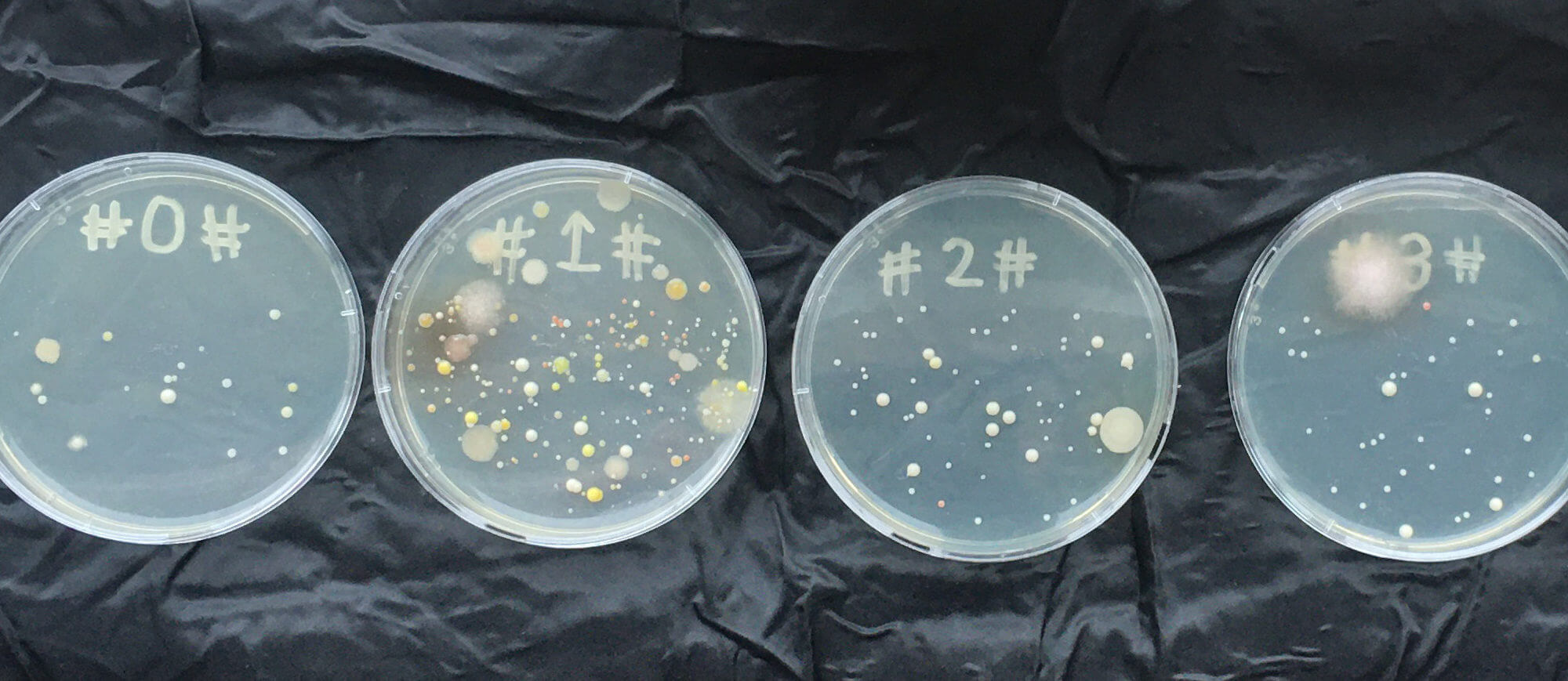This experiment tests how much bacteria remains on face-covering fabric bandanas that are soaked in an iodized salt-water solution, compared to bandanas that are not soaked in an iodized salt-water solution.
Experiment Origin:
This experiment is inspired by a scientific study published by Nature, in 2017.
The Nature article explains testing done on fabric face masks that were soaked in a salt solution, with intent to reduce viral transmission in face masks.
I am an amateur scientist and I do not have the ability to test for viral transmission of my salt-bandana face coverings.
While I can not test for viruses at home, I can test for bacteria on my homemade salt-bandana face covers.
Process:
– Five clean bandanas are soaked for 60 minutes in a 1:4 salt-water solution
– Allow the five salt-soaked bandanas to air dry
– Wear each individual bandana as a protective face covering while doing everyday tasks
– The five salt-soaked bandanas are then swabbed with sterile cotton
– Salt-soaked bandana swabs are brushed on agar in petri dishes
– Petri dishes are left in an 80 degree F kitchen cabinet for 72 hours
– Results are then observed and cataloged
Results:

All five salt-soaked bandanas show evidence of bacteria in their petri dishes
All five petri dishes showed evidence of small white, yellow, and red circular blobs
Three of the five petri dishes showed evidence of white fuzz
Conclusions:
No definitive conclusions can be drawn from this experiment, due to the relatively-small sample size.
Next Time:
-Collect larger sample size (30 bandanas instead of 5)
-Wear the bandanas in a variety of different environments (beach, park, restaurant)
-Wear the bandanas in different weather conditions (sun, fog, mist)
-Wear salt-soaked bandanas while driving (windows down, air conditioning on)
-Ask friends to wear salt-soaked bandanas and return them for swabbing
Possible Name: BandaNaCl
(NaCl is the chemical formula for salt)
Suggested Articles:
- Coffee Grinder Comparison: Comandante and Hario Compare Comandante and Hario coffee grinders. Learn about grind time, brew time, and the impact of different grinders on coffee taste.
- “Spit Kills” T-Shirt Creation Follow the process of creating a “Spit Kills” t-shirt, from initial sketch to finished product. Learn about DIY t-shirt design and the importance of clear messaging.
- How To View Solar Eclipses with a Pinhole Camera Learn how to safely view a solar eclipse using a pinhole camera or DIY methods with your hands or cardboard. Observe the eclipse and protect your eyes. These are all experiment-related articles.

